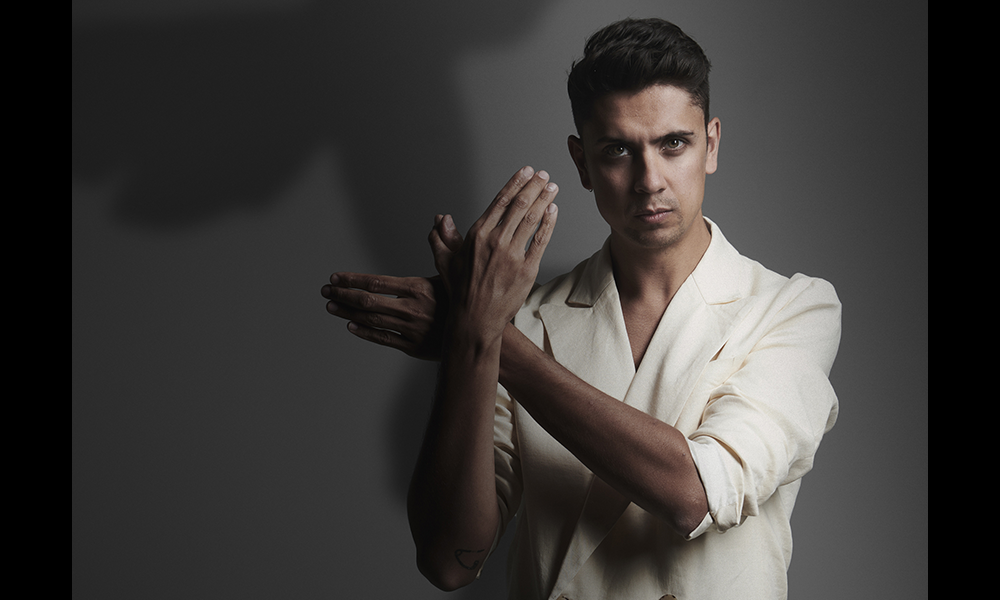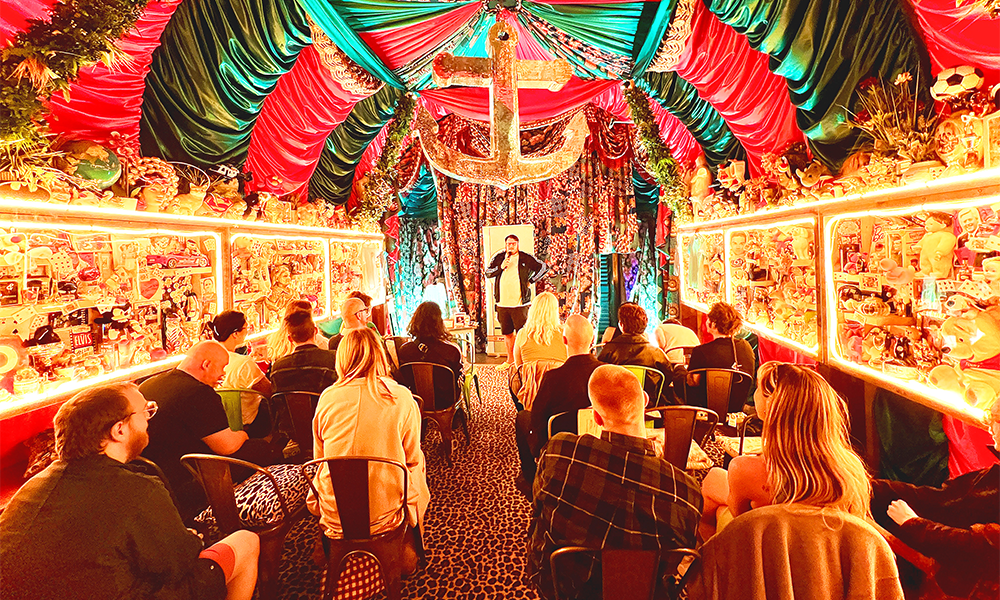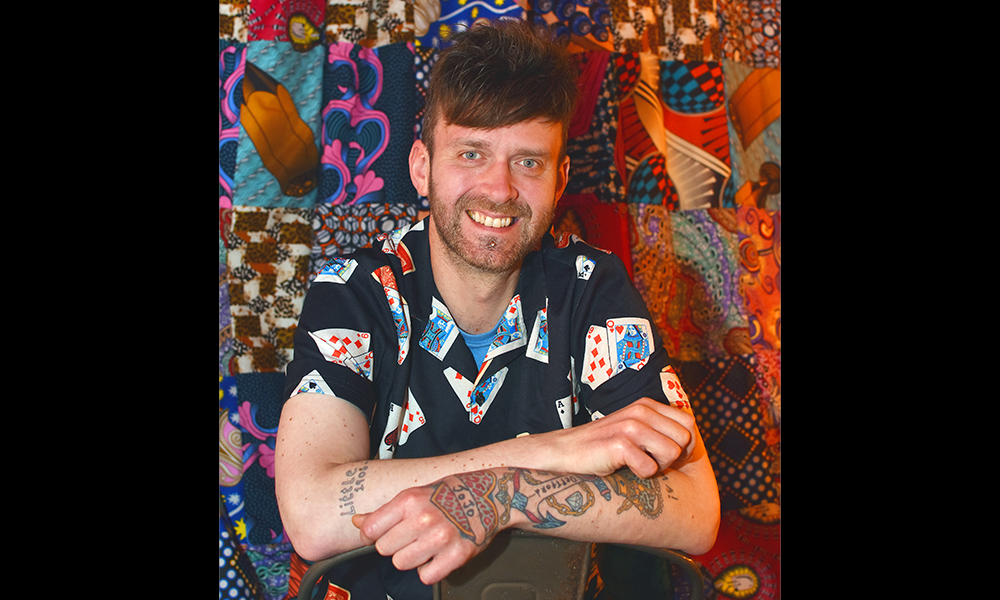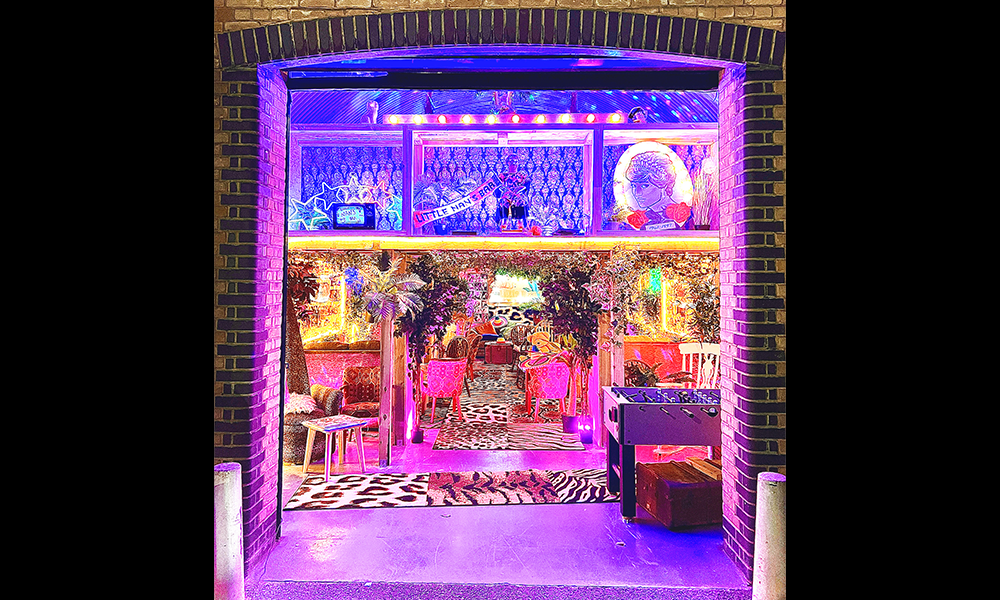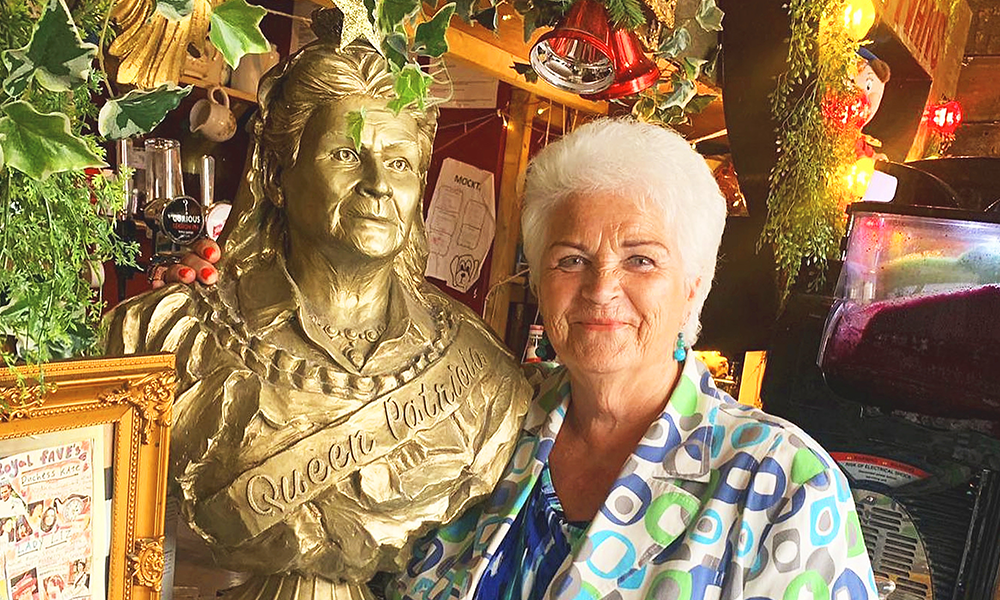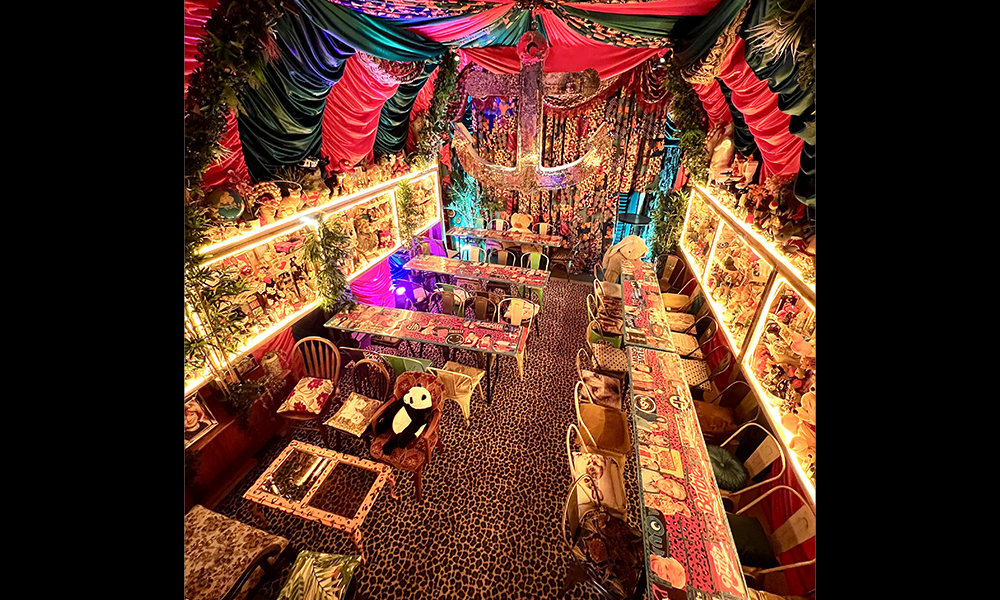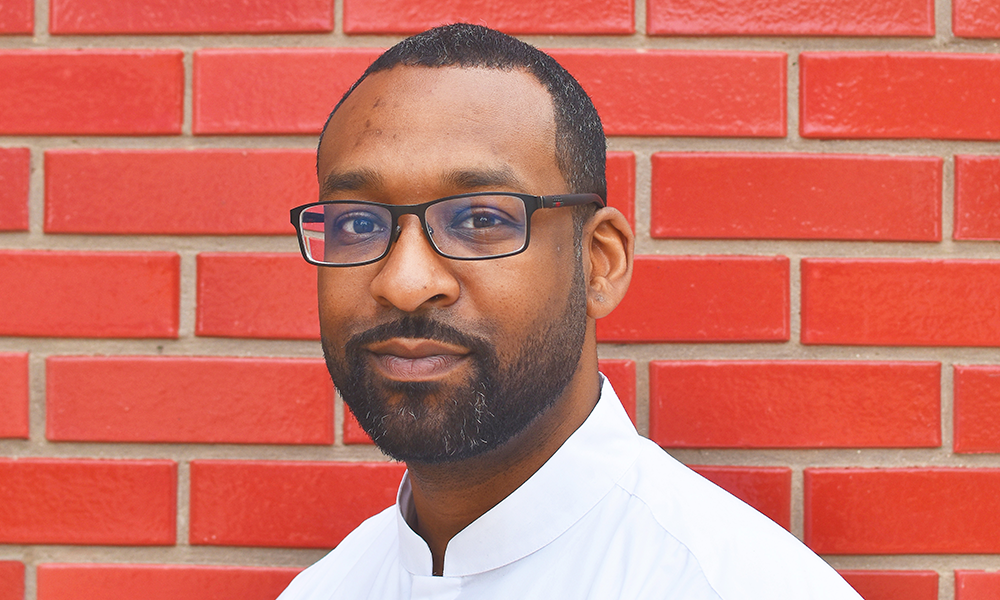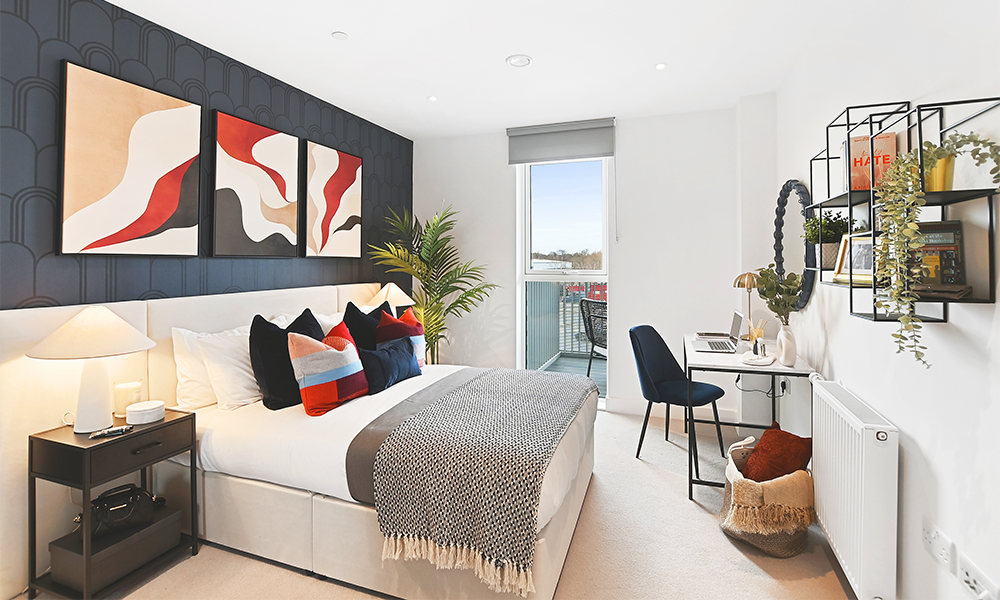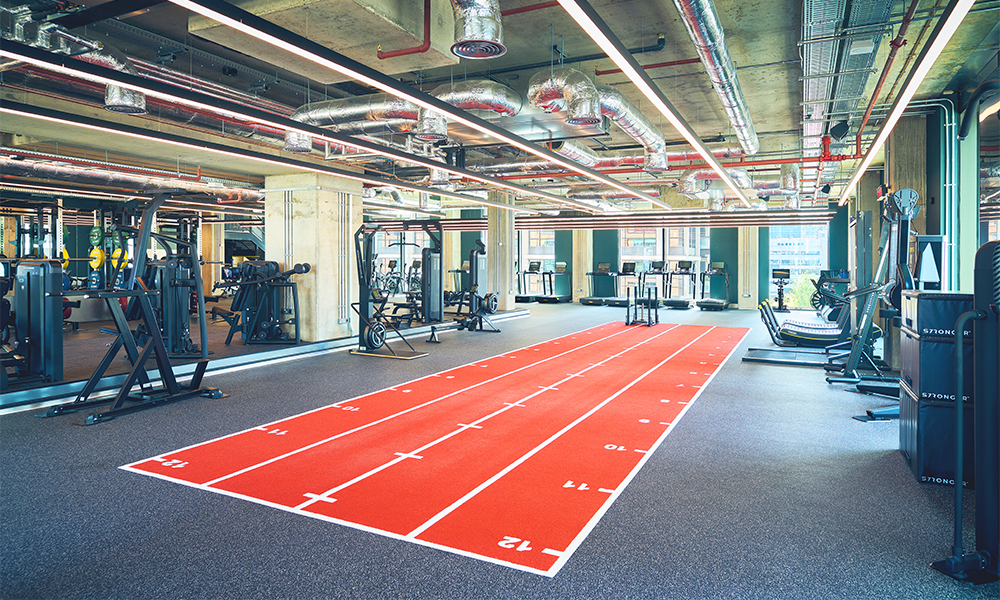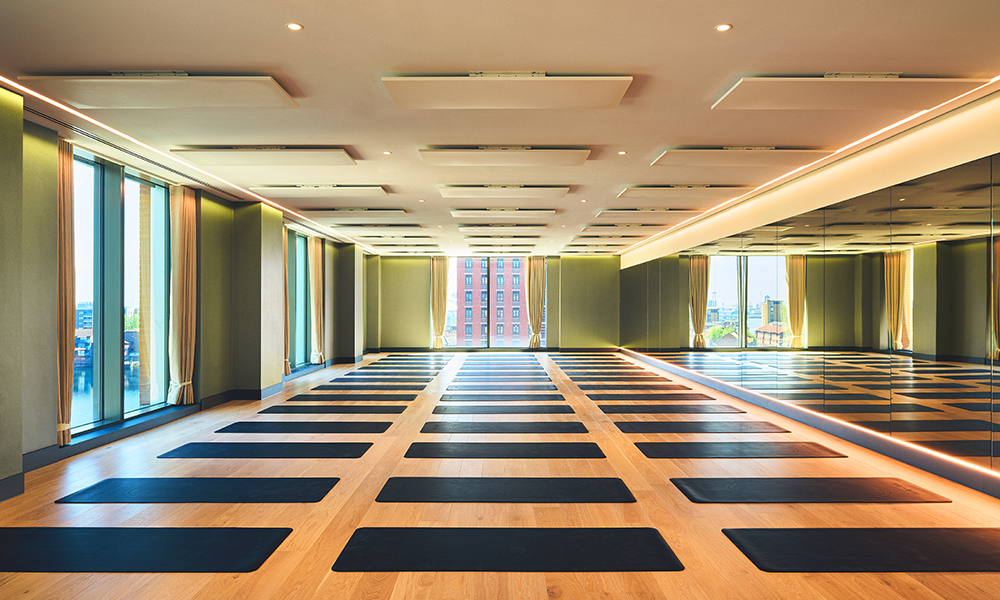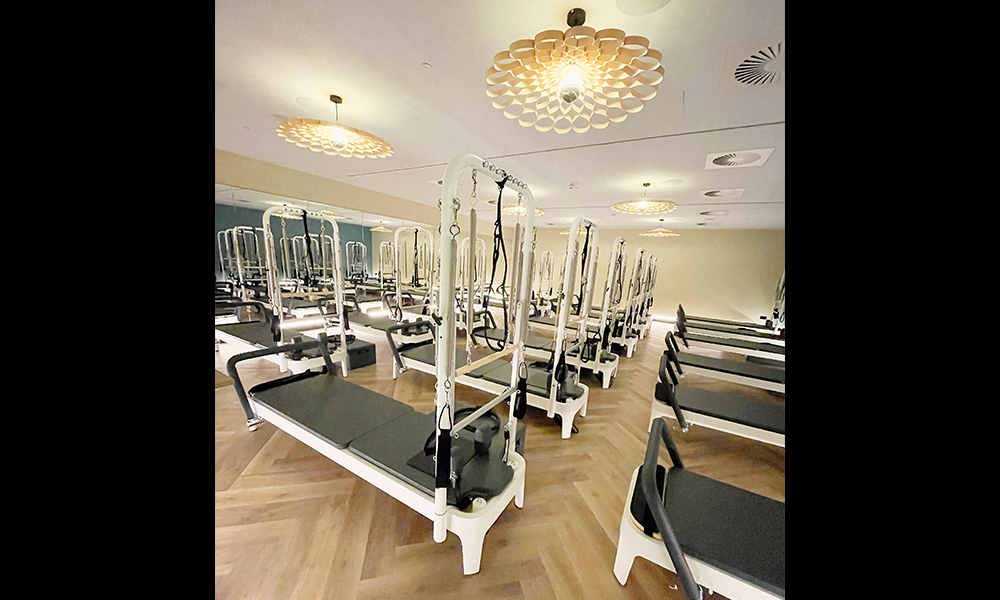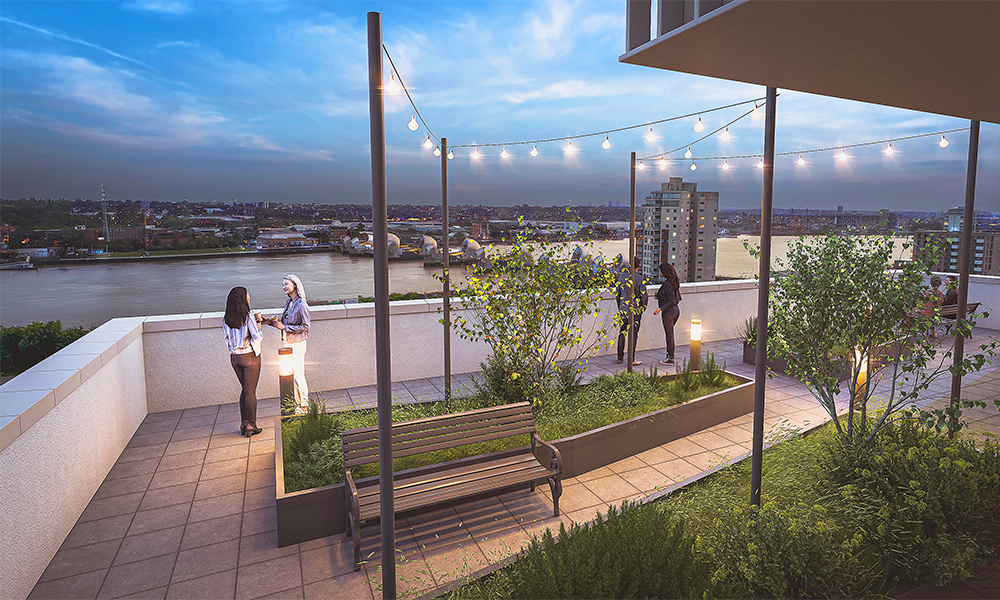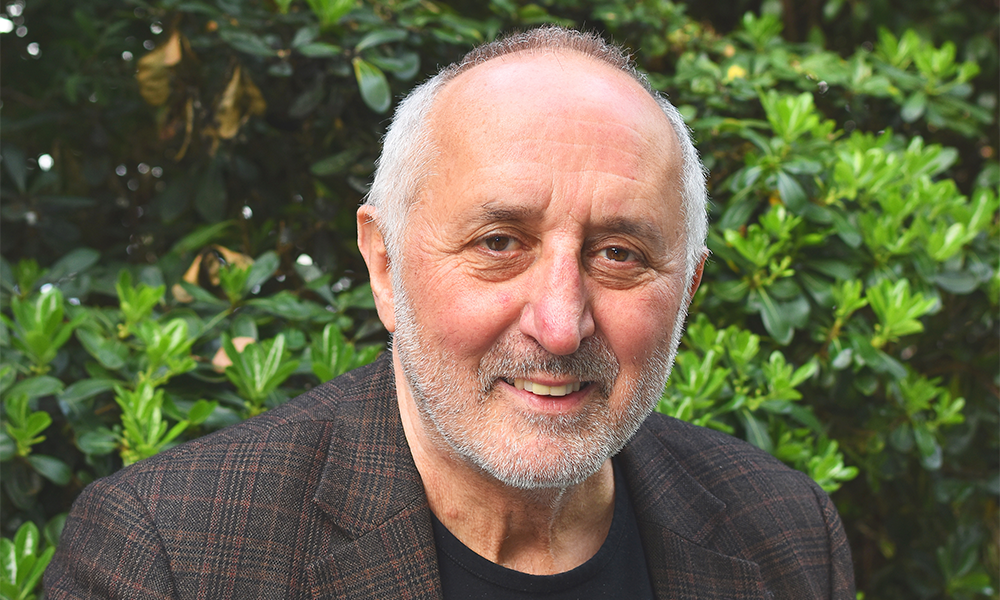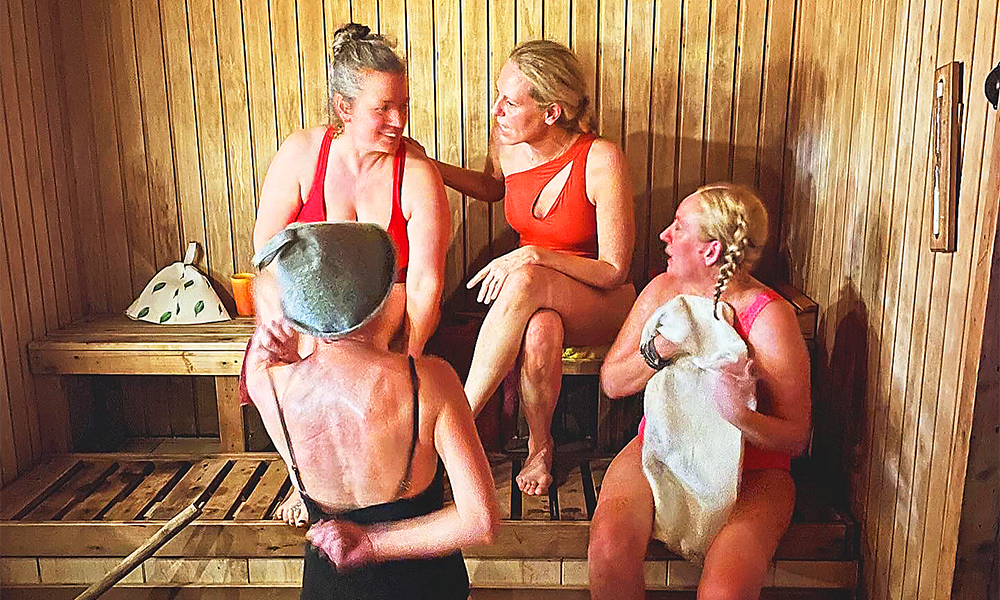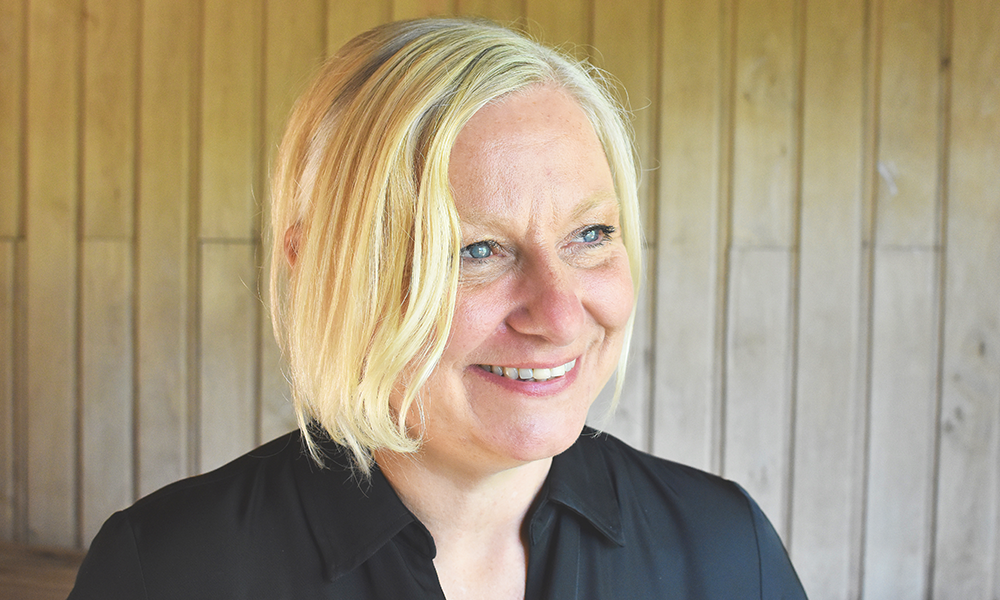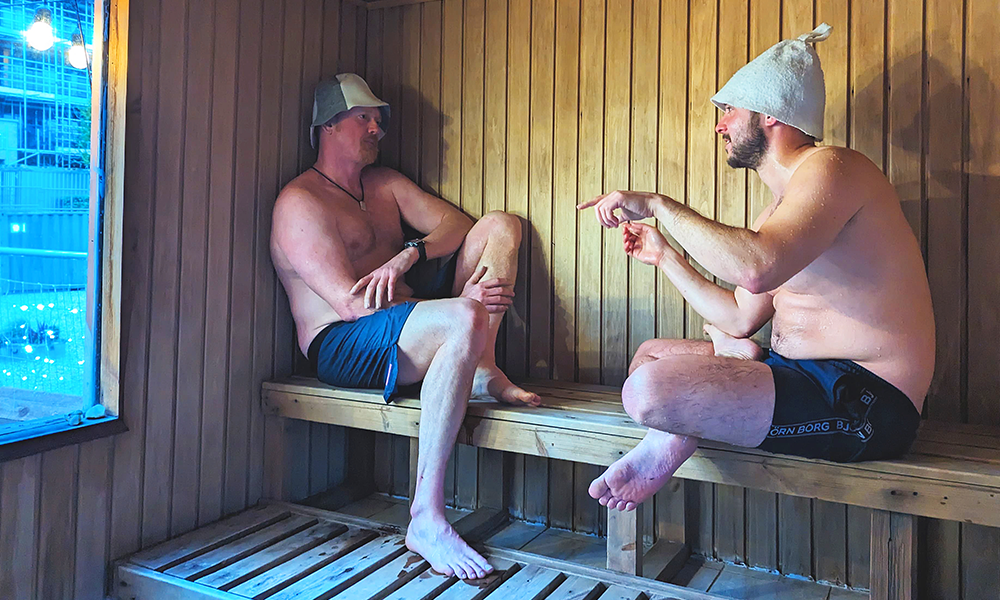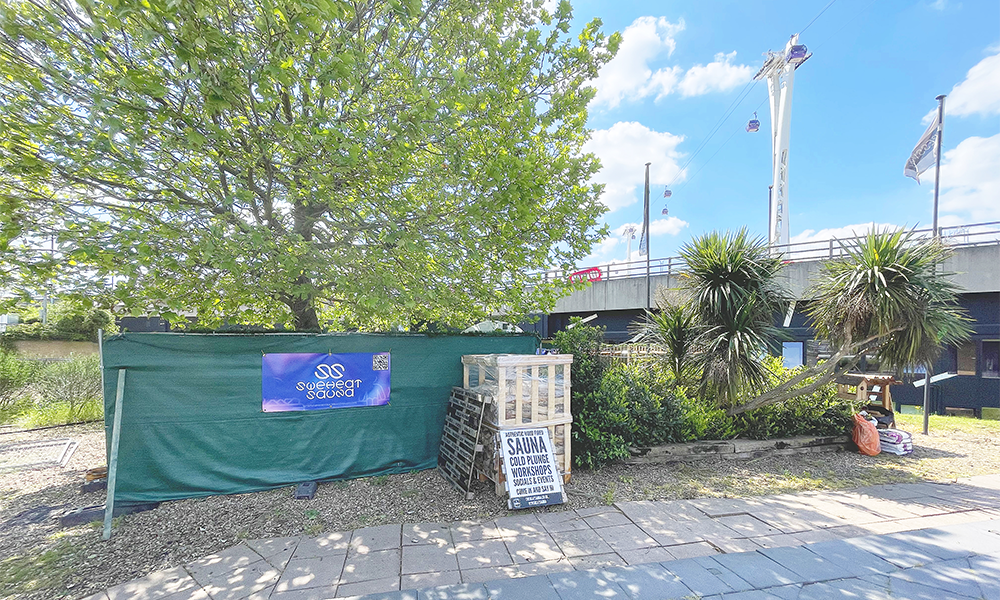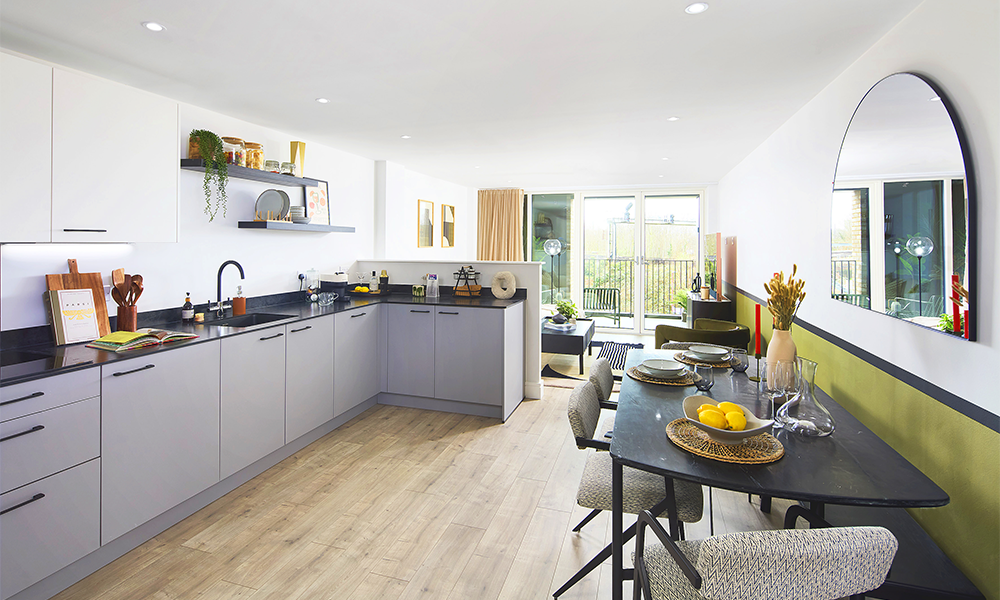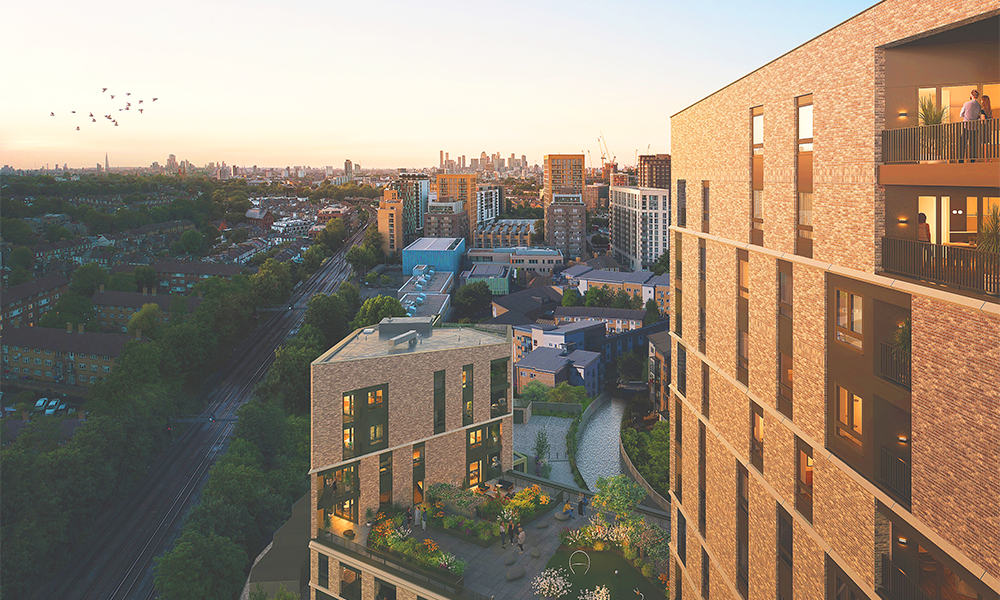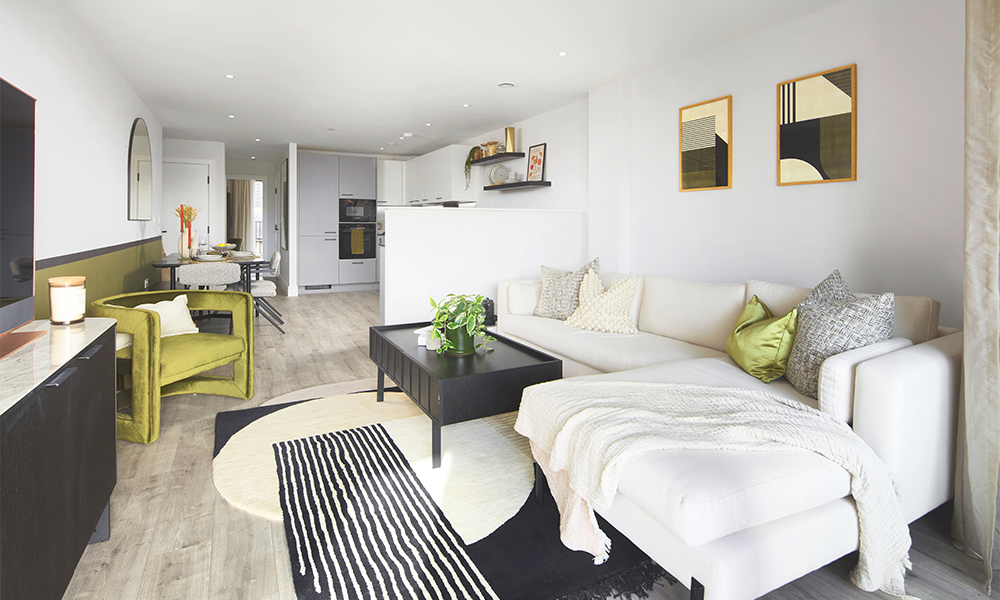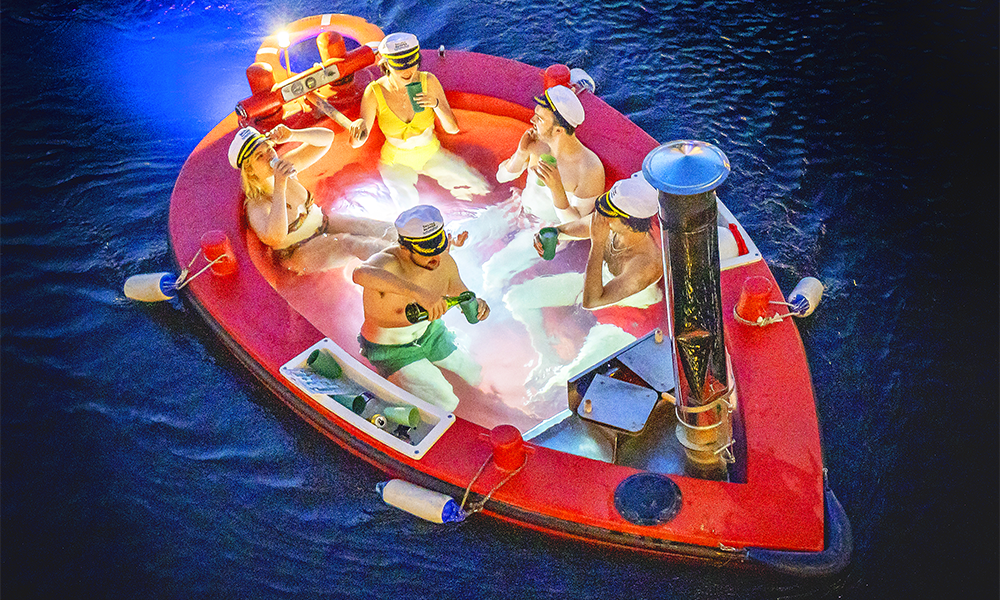The artist, illustrator and founder of Power Of Women recently unveiled her clothing designs

Subscribe to our free Wharf Whispers newsletter here
Leah Sams’ Paradise Collection from Power Of Women perhaps typifies the changing face of Canary Wharf.
It’s tech, it’s fashion, it’s illustration, it’s female-led and it’s been created and launched on the east London estate.
Having swapped theatrical costume and set design for art and illustration during the pandemic, Leah found success selling digital works as non-fungible tokens (NFTs).
The move into tech came after her husband Jack also changed career, leaving the performing arts world to fight fires and discovering his colleagues’ passion for crypto assets.
“He showed my artwork to them, which is very female-orientated and empowered, and these burly men were saying they would buy it,” said Leah, who moved to the UK from Malaysia to study theatre arts at university.
“That was the rabbit hole that started my career in the digital art world.
“At the time I started selling NFTs it was a very male space – less than 10% were female collectors or artists.
“I launched a very female-focused collection of works and they sold out within three hours and made more money than I did in a whole year selling on Etsy.
“At the time a lot of artists saw it as a way to make a living, often for the first time as digital creators.”

Leah Sams – the power of tech…
Leah’s success led to an exhibition at Adidas’ flagship London store as well as collaborations with the likes of Manchester City FC.
Much of the hype has gone out of the NFT market.
But Leah is certain the tech that makes it work – an immutable record of the provenance and authenticity of a work stored on a blockchain to identify the owner of a piece – will continue to become an increasingly important part of our digital world.
“A lot of the people who came into NFTs to make a quick buck have all left,” said Leah, who lives on the Isle Of Dogs.
“But what you’re left with is interesting people building interesting things, and that’s great, because it’s now easier to sift through and find amazing pieces.
“The is definitely not perfect, but the people who are working with this technology truly believe that it is going to be part of our everyday lives.
“When we first had the internet, there a lot of sceptics and all sorts of companies building websites, but from that emerged the likes of Google and Facebook and all these goliaths.
“Provenance and authenticity are very important in the traditional art world, so having a public, digital record of works that cannot be changed is going to be really useful.
“The future is that NFTs will be rebranded – the technology will be there but in the background and it’s really important with regard to things like copyright that artists understand where the world is heading.
“At the moment we’re seeing cryptocurrency, AI, blockchain and NFTs all intermingling.
“It’s a really exciting space to be in because it’s the precursor to things that come next.”

thinking differently
“Right now, just as in the traditional art world, there are a few artists making a mint in the digital space,” said Leah.
“Others are diversifying their income, but NFTs have significantly changed people’s attitude towards digital art – that it should be respected and people should be paid fairly for it.”
The launch of The Paradise Collection and Leah’s move into fashion, however, has more to do with a desire to keep creating than to find fresh markets for the things she makes.
“As we had a bit of money to invest, I thought we could just do the same old thing or we could do something different,” she said.
“This felt like it was a different iteration of what I’ve been working towards.
“All of my artwork has had a concentration on representation, culture and diversity – fashion has also been a huge part of that because of my history in theatre and costume.
“I’ve also always been drawing fashionable women, so this has been a dream since I was a kid, to be doing something with clothes.”
a learning curve
“A friend of mine in the NFT space – Shreya Bhan – who started her career in fashion said that, when I was ready, we could do something together,” added Leah.
“She’s guided me through it and it’s been fascinating to see the correlation and some similarities with the work I was doing in costume with the pattern cutting elements, use of silhouettes and how fabric falls on the body.
“Lots of people have bought my artwork, but there’s something different in buying an wearing a garment to something that lives on a screen or a wall as a print.
“I feel like my customers are wearing my pieces and that’s quite a responsibility to have, which is why it’s been a long process to fine-tune and curate the collection.
“Designing on fabric is very different from working on an iPad – it’s been a huge learning curve.
“I started off with a budget and had to figure out how to create a diverse line that worked financially but was also an extension of a brand that had only existed as artworks before.
“Now it’s coming into the physical world, how do you represent it and how do I link it back to my art?”

Leah Sams – The Paradise Collection
Comprising unisex shirts, wrap dresses and tiered dresses, The Paradise Collection features three vibrant prints on cotton as well as colourful designs on a trio of silk scarves.
But, tying in with Leah’s wider brand, there’s more to the pieces than their physical existence.
“Each piece has a chip that I’ve sewn into it, which can be scanned with a phone,” said Leah.
“I hope I will always make sustainable collections and the point of the chips is that people can own the garment on the blockchain, see where it’s come from, what it’s made of and how to care for it.
“But it’s also have a connection to me – the person who’s made it, so that it means more than something you buy from a big brand.
““It’s been a dream since I was a little girl to design my own clothes.

“To be able to launch my own collection of garments, 20 years on, is both surreal and empowering.
“Every aspect of this collection from the colour of each button, to the digital experience that comes with each garment, has been designed with love and care.
“I hope that anyone who wears a Power of Women garment will feel like they are wearing a piece of art.
“I think what’s also important is that I can always update the digital experience any time.
“It feels personal that people can have a connection to me via the Web3 space where The Paradise Collection was born – what I’ve created so far and all the work I’ve done to make that happen.”

an east London creation
“I chose to launch the collection at Grind in Canary Wharf’s Market Halls because it’s where I do a lot of my drawing,” said Leah.
“I have a studio at home on the Isle Of Dogs, but this is where I choose to get away from that.
“Since creating Power Of Women in the Web3 space, I’ve met a few London artists, so we have sketching and coffee gatherings and it felt really right to have our launch party there.
“I also wanted to showcase that there are creators here.
“The Canary Wharf community is enriching and the more we can showcase that, the more we will all benefit from it.
“All of the professional shots for the collection were done at The Vow Studio in Wood Wharf. It was the perfect location to do that and taking everyone for lunch locally after was just lovely.
“There’s something about birthing this collection here because there is an entrepreneurial aspect to doing that – Canary Wharf has a corporate reputation but there’s also a residential side to it that’s more community based.
“Launching here and celebrating all the people who have worked just felt really right.
“I get where the estate’s reputation comes from but I think things have shifted. It’s more of a place to hang around now and it’s very exciting.
“I love the buildings and all of the greenery.
“I have been very unapologetic about my art and I don’t want to be apologetic about my fashion.
“I’ve created pieces that are bold and colourful and I hope people will look at them and thing they’re something a bit different.”
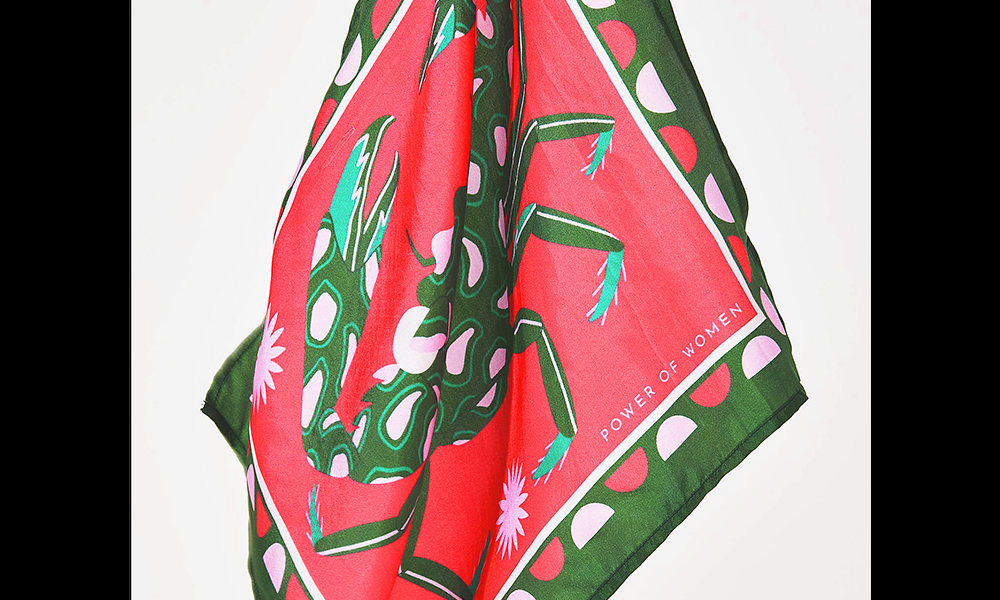
key details – Leah Sams
The Paradise Collection from Power Of Women by Leah Ibrahim Sams is available to buy online with prices starting at £25.
Leah’s other artworks including NFTs can also be viewed and purchased via this link
Find our more about Leah Sams’ Paradise Collection here
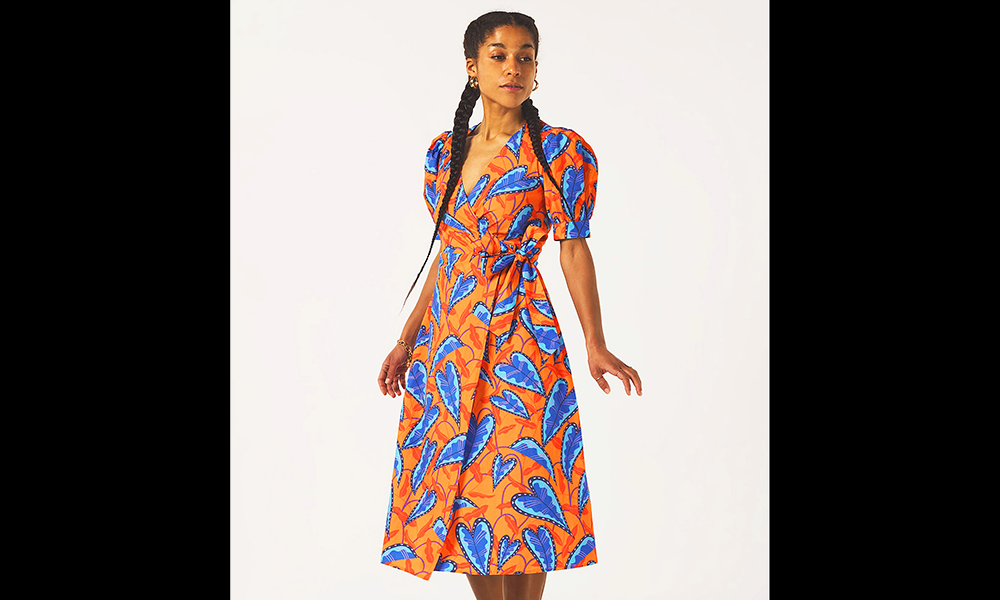
Read more: How Third Space has expanded its offering at Canary Wharf
Read Wharf Life’s e-edition here
Subscribe to our free Wharf Whispers newsletter here
- Jon Massey is co-founder and editorial director of Wharf Life and writes about a wide range of subjects in Canary Wharf, Docklands and east London - contact via jon.massey@wharf-life.com








